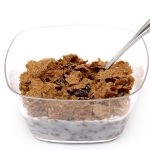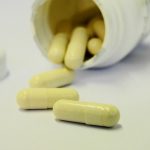The Dragonhead plants are annuals in the Lamiaceae family and form the genus Dracocephalum.
In herbal medicines, the plant leaves have been used like Lemon Balm for treating a range of disorders such as stomach and liver complaints, headaches, sinusitis even coronary heart disease.
One species Moldavian Dragonhead (Dracocephalum moldavica L.) has been studied intensively.
Most come from across the temperate lands of Europe into eastern Asia. Dracocephalum fruticulosum Stephan ex Willd., and D. nutans L. and found in Mongolia for example.
Components
The components claimed to be responsible for dragonhead activity are a mix of flavonoids and phenylpropanoid oligomers. These are many chemical types which are found in other plants but seem to be especially prevalent in this genus. More specifically they are hydroxycinnamic acids and flavonoids, including caffeic acid, ferulic acid, rosmarinic acid, luteolin, luteolin-7-O-glucoside and apigenin (Dastmalchi et al., 2007). Ferulic acid is often found in skin creams.
A recent study showed the presence of four new compounds, a flavanone glucoside, two stilbenoid glycosides, and a phenylpropanoid amide glycoside (Sabrin et al., 2021).
Anti-Virucidal Activity
A recent study found that some of the extracts of Dracocephalum fruticulosum and D. nutans might have virucidal activity. In one study compounds found in various dragonhead plants were active against Feline calicivirus and on that basis possible active against human norovirus (Sabrin et al.,2021). Norovirus is a severely debilitating sickness bug which has been responsible for many outbreaks throughout the world.
References
Dastmalchi K, Dorman HJD, Kosar M, Hiltunen R. (2007) Chemical composition and in vitro antioxidant evaluation of a water-soluble Moldavian balm (Dracocephalum moldavica L.) extract. LWT Food Sci Technol. 40 pp. 239–248.
Domokos J, Peredi J, Halasz-Zelnik K. (1994) Characterization of seed oils of dragonhead (Dracocephalum moldavica L.) and catnip (Nepeta cataria var. citriodora Balb.) Ind. Crops Prod. 3 pp. 91–94.
Jiang J, Yuan X, Wang T, Chen H, Zhao H, Yan X, Wang Z, Sun X, Zheng Q. (2014) Antioxidative and cardioprotective effects of total flavonoids extracted from Dracocephalum moldavica L. against acute ischemia/reperfusion-induced myocardial injury in isolated rat heart. Cardiovasc Toxicol. 14 pp. 74–82
Mirza Synthia Sabrin, Erdenechimeg Selenge, Yohei Takeda, Javzan Batkhuu, Haruko Ogawa, Dulamjav Jamsransuren, Keisuke Suganuma, Toshihiro Murata (2021)
Isolation and evaluation of virucidal activities of flavanone glycosides and rosmarinic acid derivatives from Dracocephalum spp. against feline calicivirus, Phytochemistry, 191,
2021, 112896 (Article)


Leave a Reply